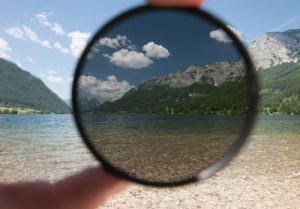Our kits are currently being reviewed and updated by a team of collaborative, innovative and interdisciplinary educators who wish to enhance the educational opportunities for students. These dedicated teachers are members of CRISP Collaborative Science for All (CCSA) as well as local educators.
Click to see the SCSU CRISP Module Template used by CCSA for improving and updating the CRISP demos and kits. Each kit page offers a CRISP developed teacher module and CRISP aligned standards (both NGSS and CCSS)
Kit Request form

The way a material behaves on the macroscale is affected by its structure on the nanoscale. Nanotechnology takes advantage of special properties at the nanoscale to improve existing materials.
Adapted from NanoDays Toolkits originally created for NISEnet via the NanoDays project
This material is based upon work supported by the National Science Foundation Award Numbers 0532536 and 0940143. Any opinions, findings, and conclusions expressed in this material are those of the authors and do not necessarily reflect the views of the National Science Foundation.
Subject(s):
Optics and Light, Reflection, Refraction
Objectives:
Students will understand how polarized light moves differently because of the structure of the tape. The polarizing filter filters white light and produces the colors we see.
Materials in this kit:
- Polarizing filters (2) in cardboard holders
- Overhead transparency sheets
- Transparent tape
- Diffuse light source (a window during daylight hours or an overhead light)
- “How polarizers block light” image sheet
Suggestions for the Teacher:
Ask students to hold the polarizers by the holders to avoid fingerprints on the polarizers.
Students can take home the clear plastic sheets with tape on them, but not the polarizing filters. Since students will not be allowed to take home the polarizing filters with them, you can suggest one way they can continue their experimenting at home using a computer screen and some polarized sunglasses. Filters inside the screen polarize the light coming out of the computer and the sunglasses act as the second filter. They can also look at materials such as plastic silverware, plastic wrap, or other molded clear plastics by placing them in front of the computer screen and looking through the sunglasses.
Safety:
Students should not be looking at direct sunlight. If you are doing this activity outside or near a window, be careful not to ask students to look directly into the sun.
Additional Resources:
Polarizers teacher module
Polarizers CRISP aligned standards
Polarizers student worksheet from CRISP
Polarizers Guide from NanoDays
NanoDays Polarizers website (Great resources!)
STEM Careers:
Materials Scientist
Optical Engineer
Engineer
Environmental Engineer
Optician
Solar Energy Systems Engineers
Materials Engineers
Mechatronics Engineers
Nanosystems Engineers
Nanotechnology Engineering Technologists
Nanotechnology Engineering Technicians
Standards:
MS-PS4-2.
- Develop a model to describe that light reflecting from objects and entering the eye allows objects to be seen.
- Develop and use a model to describe that waves are reflected, absorbed, or transmitted through various materials.
PS4.A: Wave Properties
- A simple wave has a repeating pattern with a specific wavelength, frequency, and amplitude.
PS4.B: Electromagnetic Radiation
- An object can be seen when light reflected from its surface enters the eyes.
- When light shines on an object, it is reflected, absorbed, or transmitted through the object, depending on the object’s material and the frequency (color) of the light.
- However, because light can travel through space, it cannot be a matter wave, like sound or water waves.
CC-2 Cause and Effect
- Cause and effect relationships are routinely identified.
CC-6 Structure and Function
- Structures can be designed to serve particular functions by taking into account properties of different materials, and how materials can be shaped and used.
Interdependence of Science, Engineering, and Technology
- Science and engineering complement each other in the cycle known as research and development (R&D).
- Influence of Engineering, Technology, and Science on Society and the Natural World
SEP 2 – Developing and Using Models
- Use models to describe phenomena.
SEP 7- Obtaining, Evaluating and Communicating Data
- Communicate technical information or ideas (e.g. about phenomena and/or the process of development and the design and performance of a proposed process or system) in multiple formats (including orally, graphically, textually, and mathematically).
